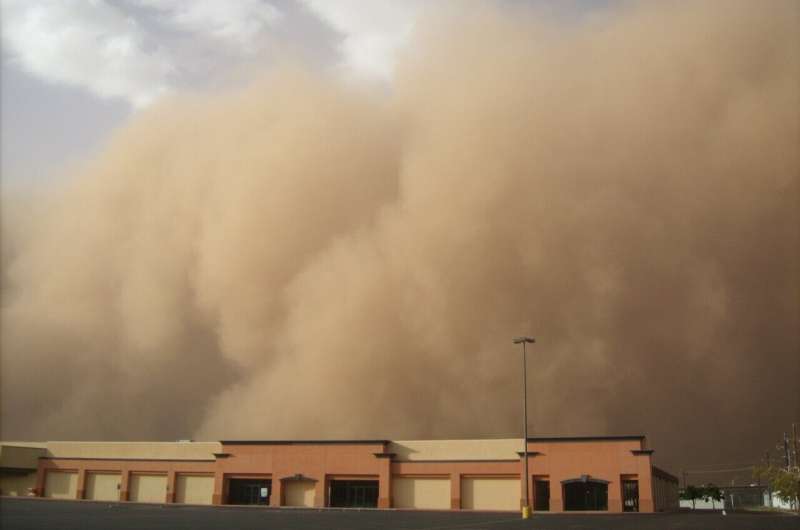This article has been reviewed according to Science X's editorial process and policies. Editors have highlighted the following attributes while ensuring the content's credibility:
fact-checked
peer-reviewed publication
trusted source
proofread
Crater lake sediments in Northeast China reveal 25-thousand-year-long record of dust activity in East Asia

Dust storms occur frequently throughout Central and East Asia today. Several driving factors, particularly related to the East Asian Summer Monsoon, the East Asian Winter Monsoon and the westerlies, can influence dust production and transport in these regions.
Previous dust records in East Asia since the peak of the last Ice Age mainly came from the Chinese Loess Plateau and the arid zones of Central Asia. However, records from lake sediments in northeast China, located in the downwind direction of the East Asian winter winds, remain limited. This lack of knowledge hinders the understanding of dust dynamics in northeast China and East Asia more broadly.
Researchers from the Nanjing Institute of Geography and Limnology of the Chinese Academy of Sciences (NIGLAS) and their collaborators investigated the history of the East Asian Winter Monsoon over the past 25 thousand years through chemistry analysis of well-dated 12.55 m-long sediment of Lake Tuofengling, a crater lake in northeast China. The study was published in Geophysical Research Letters on June 20.
They found that the lithogenic sediments of lake Tuofengling are a mixture of local volcanic debris from the lake basin and windblown dust from the Gobi Desert of the Mongolian Plateau. Additionally, they suggested that the East Asian Winter Monsoon is the main driving force for the transport of dust from the Mongolian Plateau to Lake Tuofengling over this interval.
Based on their new data and previously published work, the research team proposed that changes in dust activity, and in turn the characteristics of the East Asian Winter Monsoon, were likely controlled by a combination of global ice volume and the strength of Atlantic Ocean circulation since the last Ice Age.
"Our new record of Mongolian dust input to Lake Tuofengling, along with the knowledge of regional and global climate, allows us to reconstruct the history and driving mechanisms of northeast Asian dust activity over the past 25 thousand years," said Zhang Wenfang, first author of the study. "Our study helps improve our understanding of the driving factors of dust activity in East Asia, as well as our ability to predict dust activity in the future."
More information: Wenfang Zhang et al, Mongolian Dust Activity Over the Last 25 Kyr Predominantly Driven by the East Asian Winter Monsoon: Insights From the Geochemistry of Lake Tuofengling Sediments, Geophysical Research Letters (2023). DOI: 10.1029/2023GL103633
Journal information: Geophysical Research Letters
Provided by Chinese Academy of Sciences



















